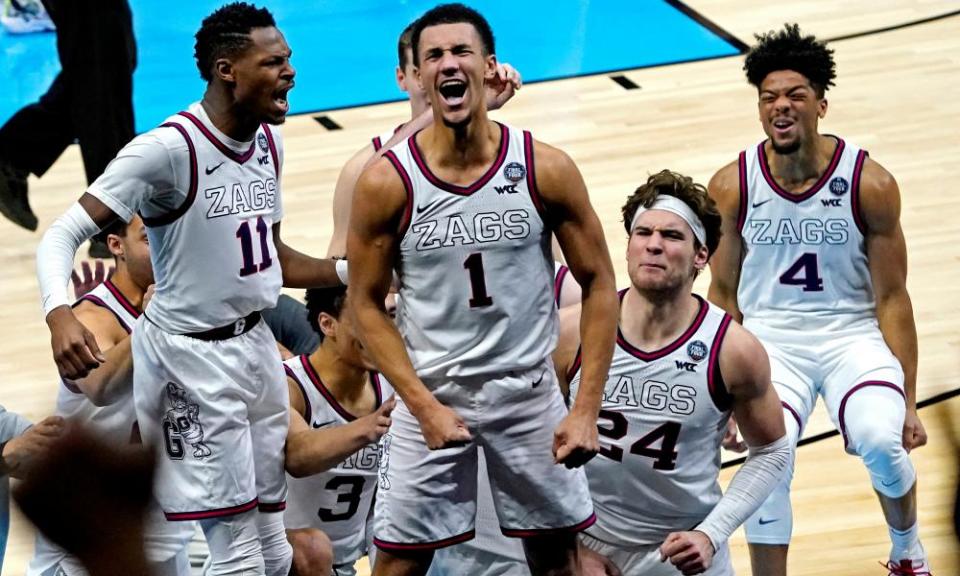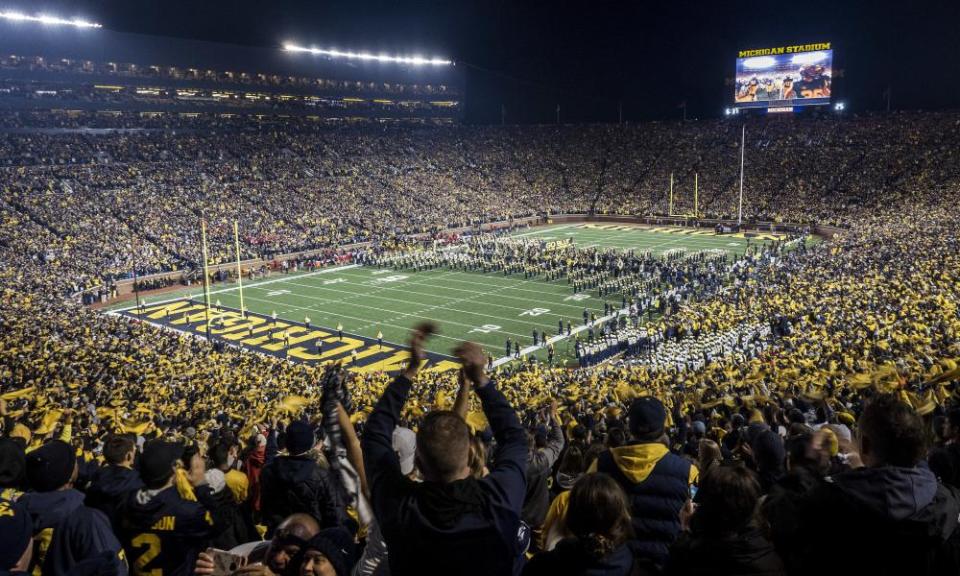Will new rules make college athletes instant millionaires? Not so fast…

College sports’ governing body, the NCAA, ruled on Wednesday that college athletes will be allowed to profit from their name, image and likeness (NIL), a historic ruling by the 115-year-old institution. It’s pretty easy to figure out why the NCAA is making the decision now – and it’s not because they’re concerned about college athletes’ bank balances. Last week, the supreme court unanimously ruled in favor of college athletes in a case that paved the way for them to be paid. Then, on Wednesday, a variety of state laws were set to change that would allow athletes to legally pursue NIL profits. The NCAA’s ruling, which came a mere 12 hours before the sweeping legal changes, ensures that athletes in all 50 states will be eligible to make money off of their fame.
Why is this a “historic” ruling?
The public debate over whether college athletes should be paid has been one of the central discussions in US sports for over a decade. College sports is a much, much bigger deal in the US than in other countries. How big? College sports are a $14bn industry and popular football teams like the University of Michigan routinely draw more than 100,000 spectators for home games.
But the NCAA barred its athletes from receiving endorsement money because it considered them student athletes. A large percentage of college athletes attend schools of their choice on full scholarships, which the NCAA deemed sufficient compensation for the athletes’ roles in university revenue. Athletes received other benefits in the form of free meals and exclusive tutoring but were explicitly barred from accepting cash. The underpinning of the NCAA’s legal strategy over the past decade is that athletes are students who are good at sports, not athletes who fuel a multibillion-dollar industry.
That may have been true back in the 1930s, but as college sports ballooned into big business through television contracts and merchandising, the NCAA’s stance on player compensation never changed. Even if the athlete was a superstar who helped bolster the team’s attendance and national profile, the NCAA prevented them from receiving money in endorsements or jersey sales.
For example, the No 1 overall NFL draft pick in 2021 was Clemson quarterback Trevor Lawrence, who wore the No 16 jersey for the Tigers. A customer can purchase an exact replica of his jersey for $99.99, but Lawrence was barred from earning any profit from that sale (in the NFL, money from jersey sales are pooled and distributed among the league’s players). In 2004, University of Colorado wide receiver Jeremy Bloom was declared permanently ineligible by the NCAA after he received endorsements as a moguls skier for the 2002 US Olympic Team.
Gradually, public opinion on college athlete compensation shifted. In 2009, former UCLA basketball star Ed O’Bannon filed a lawsuit against the NCAA that he was entitled to earn money from appearing in a NCAA-branded video game. In a 2011 piece titled The Shame of College Sports, famed civil rights historian Taylor Branch compared college sports to slavery. The link was not tough to make when you consider that most of the coaches and administrators – many making millions of dollars a year – in the most profitable college sports (football and basketball) are white, while most of the athletes putting their bodies on the line for free are black.
Related: 'I signed my life to rich white guys': athletes on the racial dynamics of college sports
Now that the NCAA allows athletes to profit from their NIL, a star college quarterback could appear in a TV ad munching on a popular cereal brand in his team’s jersey and get paid for it.
Don’t all the college stars go on to make millions in the pros though?
In a word, no. Around 98% of college athletes never make it as a professional, meaning their only time in the spotlight is while they’re at college. And even those talented few who do make it are not guaranteed to become millionaires. The average NFL career is just over three years and a 2016 study showed most players go broke within three years of retirement. And that’s just for the players in the big sports like football and basketball. Some of the athletes with the largest social media followings are female and in sports like volleyball and gymnastics, where a well-paid professional career is incredibly rare. But under the old rules the athletes were not allowed to join other social media influencers and endorse products to their hundreds of thousands of followers.

This sounds bad for the NCAA
It’s definitely not what the NCAA and its president Mark Emmert wanted.
The NCAA long argued that any compensation of its athletes would undermine the foundation of college athletics, one that supposedly prioritized education. But the facade of the NCAA as an educational institution cracked once it signed multi-year, billion-dollar television contracts and football coaches became the highest-paid employees in the state. Money, the NCAA laughably argued, corrupted the purity of amateur sports … unless you are someone like Alabama football coach Nick Saban who earns just shy of $10m a year (and, of course, is allowed to make money from adverts co-starring a talking duck). Or, indeed, Emmert whose total earning in 2018 were $2.7m.
One of the best examples of NCAA logic came from Alabama senator Tommy Tuberville — the former head football coach at Auburn, Texas Tech and Cincinnati. Tuberville voiced concern that the NCAA would become a de-facto minor league for the NFL and that smaller schools would no longer be able to sign talented high school players. What Tuberville didn’t mention was that he collected more than $7m in buyouts in his coaching career and notoriously abandoned a dinner table of recruits so he could accept another job.
So will athletes now earn a salary?
No. The new ruling allows college stars to appear in adverts, sign an agent or make money from public appearances but they’ll still be playing for free. In US professional sports, athletes are generally entitled to around half of a league’s revenue. If that was applied to the elite level of college basketball and football, the top players could earn around $2m a year. However, that’s a tiny majority of college athletes. Most college sports programs in the US don’t make any money so most athletes would remain unpaid. In addition, the players would need a powerful union to negotiate any revenue sharing agreement. And guess what? College athletes are not technically employees of their schools so can’t form a union anyway.
What will the players do now?
Start selling, presumably. And it won’t be the football and basketball players making the most money. LSU gymnast Olivia Dunne, who has 3.9 million followers on TikTok, is expected to be the highest earner in the initial stages. On a smaller scale, a restaurant in Nebraska is offering money to any athlete who promotes their burger on social media. Expect to see plenty of very fit looking people eating Runza burgers on your Twitter feed in the near future.

 Yahoo Sport
Yahoo Sport 


































































